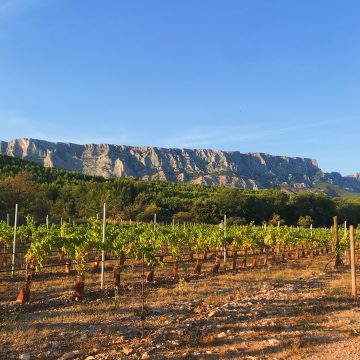Geology
One of the original features of the Cengle plateau is that it rests on the rocky bar of the same name, which rose at the same time and which is of the same geological nature as the Sainte-Victoire which overhangs us: it therefore dates from the Cretaceous period.
The clay-limestone is king
It is composed on the surface of Lutetian limestone and is thus characterized by the strong presence of these hard gray limestones, more or less decomposed into scree and clays. In some places, we can find a little red marl or even grey marl and colluvial deposits from the quaternary period, but it is the very stony clay-limestone that largely dominates our terroir.
The shallow depth of the soil means that, literally, on most of the plots and particularly at the bottom of the hillside, the roots of the vine become embedded in the crevices of the bedrock.
A perfect terroir for viticulture
In addition to the vine’s predilection for this poor and draining soil, the climate is particularly favorable. Indeed, the altitude of the plateau overexpresses the semi-continental climate of our area, deprived of maritime influences by the Monts-Auréliens and Sainte-Baume massifs which face the Domaine.
Thus, we benefit from cooler temperatures than in the rest of the region, and the ripening is more progressive and later, preserving the acidity of the grapes, and the aromatic and phenolic potential more accomplished. The frequent winds accelerate against the walls of the Montagne Sainte-Victoire which overhangs us, creating conditions that are not very favorable to cryptogamic diseases. Finally, our isolation, in the heart of a preserved nature, in the hills and the scrubland, favors biodiversity, a resilience factor for the vine.



